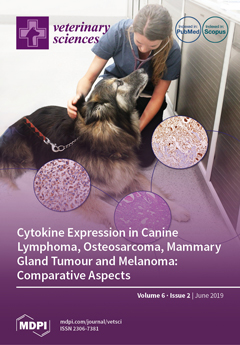Global gene expression in liver transcriptome varies among cattle breeds. The present investigation was aimed to identify the differentially expressed genes (DEGs), metabolic gene networks and metabolic pathways in bovine liver transcriptome of young bulls. In this study, we comparatively analyzed the bovine liver transcriptome of dairy (Polish Holstein Friesian (HF);
n = 6), beef (Hereford;
n = 6), and dual purpose (Polish-Red;
n = 6) cattle breeds. This study identified 895, 338, and 571 significant (
p < 0.01) differentially expressed (DE) gene-transcripts represented as 745, 265, and 498 hepatic DE genes through the Polish-Red versus Hereford, Polish-HF versus Hereford, and Polish-HF versus Polish-Red breeds comparisons, respectively. By combining all breeds comparisons, 75 hepatic DE genes (
p < 0.01) were identified as commonly shared among all the three breed comparisons; 70, 160, and 38 hepatic DE genes were commonly shared between the following comparisons: (i) Polish-Red versus Hereford and Polish-HF versus Hereford; (ii) Polish-Red versus Hereford and Polish-HF versus Polish-Red; and (iii) Polish-HF versus Hereford and Polish-HF versus Polish-Red, respectively. A total of 440, 82, and 225 hepatic DE genes were uniquely observed for the Polish-Red versus Hereford, Polish-HF versus Hereford, and Polish-Red versus Polish-HF comparisons, respectively. Gene ontology (GO) analysis identified top-ranked enriched GO terms (
p < 0.01) including 17, 16, and 31 functional groups and 151, 61, and 140 gene functions that were DE in all three breed liver transcriptome comparisons. Gene network analysis identified several potential metabolic pathways involved in glutamine family amino-acid, triglyceride synthesis, gluconeogenesis, p38MAPK cascade regulation, cholesterol biosynthesis (Polish-Red versus Hereford); IGF-receptor signaling, catecholamine transport, lipoprotein lipase, tyrosine kinase binding receptor (Polish-HF versus Hereford), and PGF-receptor binding, (Polish-HF versus Polish-Red). Validation results showed that the relative expression values were consistent to those obtained by RNA-seq, and significantly correlated between the quantitative reverse transcription PCR (RT-qPCR) and RNA-seq (Pearson’s r > 0.90). Our results provide new insights on bovine liver gene expressions among dairy versus dual versus beef breeds by identifying the large numbers of DEGs markers submitted to NCBI gene expression omnibus (GEO) accession number GSE114233, which can serve as useful genetic tools to develop the gene assays for trait-associated studies as well as, to effectively implement in genomics selection (GS) cattle breeding programs in Poland.
Full article






